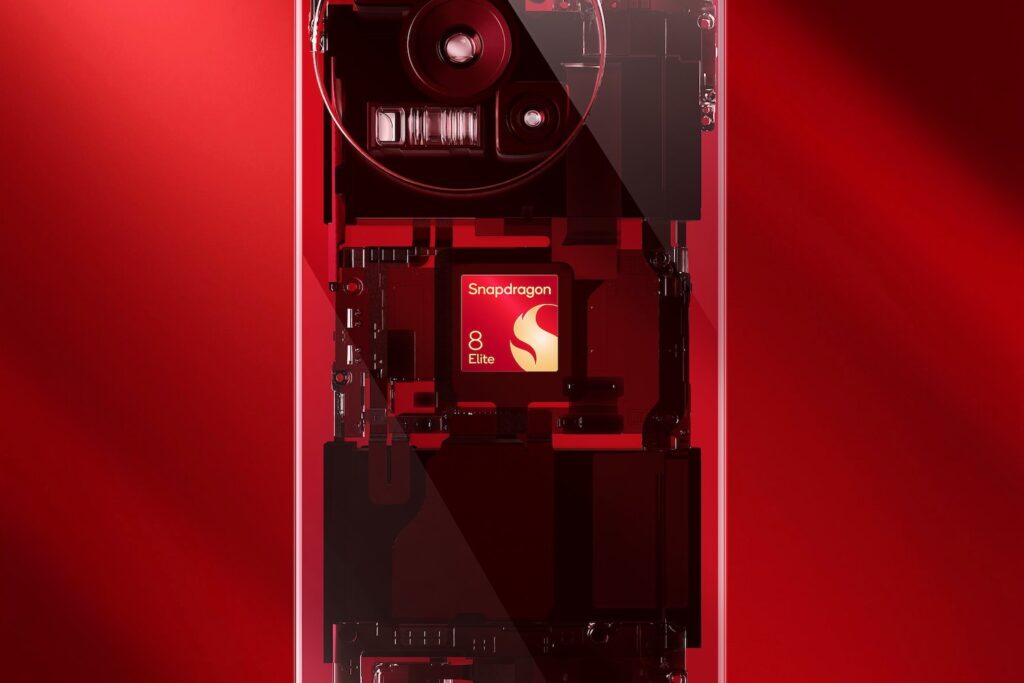Qualcomm’s next big mobile chip is becoming elite. The chipmaker says its Android-centric mobile products are more than just a step up from last year’s Snapdragon 8 Gen 3. At the massive Snapdragon Summit in Maui, Qualcomm announced the Snapdragon 8 Elite, which combines an Oryon-based CPU with the following CPUs: Adreno GPU steps should be more powerful and have better power optimization than other current mobile chips.
The Snapdragon 8 Elite brings the in-house Oryon CPU core, also used in mobile, after debuting in the Snapdragon X Elite and I’m using it. Of course, this is the era of on-device AI, so Qualcomm also claims that the next step for Hexagon NPUs should be 45% faster to support “multimodal” AI. The real star of the show is the CPU, with a total of six cores, including four performance cores reaching clock speeds of up to 4.32 GHz.

Qualcomm has released a number of benchmarks for the new chip, but of course you shouldn’t take them at face value. Suffice it to say, Qualcomm claims it can beat the iPhone 16 Pro with the A18 Pro chip in multi-core settings. The Snapdragon 8 Elite includes 24 MB of L2 cache, 12 MB of which is for the four performance cores. The new chip stack should support at least 44% better power efficiency than the previous generation.
Adreno includes three slices running at a clock speed of 1.10 GHz. Qualcomm says the chip should support up to QHD+ resolutions with a 240Hz refresh rate. This version of Adreno should deliver a 40% performance increase compared to last year’s chip, with an additional 35% performance increase from ray tracing. It is also the first mobile chip to support Unreal Engine 5.3 Nanite.
All of them are impressive. However, even though it can support well-known games, it does not mean that your phone will be your primary means of playing games. We are waiting for the next gaming phone to introduce the power of Snapdragon 8 Elite.
When it comes to connectivity, the Snapdragon X Elite is equipped with an X80 5G modem and supports Wi-Fi 7 with a FastConnect 7900 antenna. The other end of the chip uses Qualcomm’s Spectra ISP for photography, allowing for low-light photography and up to 320 MP if phone manufacturers are brave enough to produce sensors that can support that size. It claims to have great capabilities for image size.
Qualcomm hits back at Intel over Lunar Lake issue, claims ‘selected’ data from competitors

At the annual Snapdragon Summit in Hawaii, Qualcomm was in a combat mood. The US-based chipmaker was dealt a severe blow by Intel’s recent launch of Lunar Lake chips for small and thin PCs. The company now claims that Intel is wrong in saying its Snapdragon X Elite chips are still the best in power efficiency and performance, even if only some of its claims actually matter to consumers’ next PC choices He claims that he did.
Qualcomm’s ARM-based Snapdragon chips were supposed to be the revolution that lightweight Windows PCs needed. These promised better performance than traditional X86-based CPUs from Intel and AMD, as well as incredible battery life. To add to the mood, Intel debuted Lunar Lake, claiming it could match or even beat the Snapdragon X Plus and X Elite, while still offering significant improvements in battery life.
That’s how competition works, but Qualcomm wasn’t happy with Intel’s presentation. Sriram Parthasarathy, Qualcomm’s senior director of engineering, told reporters that Intel had “handpicked” the SKUs to compare with the new chips. Parthasarathy complained that Intel compared its flagship chip to the Snapdragon X1E-80-100 instead of the X1E-84.
Among several complaints, Qualcomm said its top-end Snapdragon The company also claims its mid-range X1E-80 chip is 92% faster than the Ultra 7 256V, both of which have been tested in the Dell XPS 13 since this year.

The problem is that you can’t currently find a PC with Lunar Lake’s flagship chip, the Intel Core Ultra 9 288V. Most laptop OEMs advertise Core Ultra 7 256V or 258V. I actually used a Zenbook S 14 with 256V, and I can say that the performance was solid, if not necessarily overwhelming. Another big claim was that the X Elite chips are still more power efficient than midrange Intel chips.
Intel regularly tells reviewers that the direct comparison to the Snapdragon X Elite is 258V, and Qualcomm was unable to use this chip in this benchmark comparison. The only thing Qualcomm has to compare the Ultra 9 288V to is PCWorld’s YouTube video comparing multiple chips. Of course, Intel shares its own benchmarks.
This confusion over tips has become ridiculous. This back and forth over the companies’ high-end chips has little impact on customers because no one can buy a laptop. Qualcomm is right: finding new ultralight PCs with high-end Lunar Lake chips is extremely difficult. The same can be said about the X1E-84-100 version of the Snapdragon X Elite. Most systems sold online use the X1E-78 instead (such as the Lenovo Yoga Slim 7x). The only place you can actually find X1E-84 is on the Galaxy Book4 Edge. This is the PC Qualcomm used for benchmarking.
We may eventually see a Microsoft Surface Laptop with high-end Lunar Lake chips, but for now, laptop makers don’t seem to know how to sell high-end chips. This competition means nothing if consumers can’t use the CPUs chipmakers release every year.


